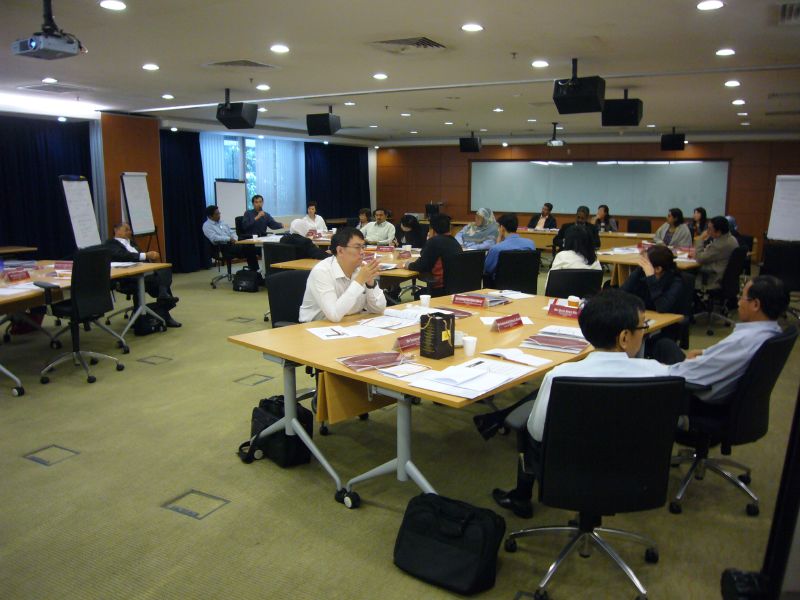
I moderated and chaired two sessions on new media yesterday at the Civil Service College. Held as part of their Senior Executive Development Programme together with the National Institute of Public Administration (Malaysia), it featured public service attendees from both sides of the causeway. Joining me for the second session were Arun Mahizhnan of the Institute of Policy Studies and Chua Mui Hoong of the Straits Times.
Several interesting points were raised during the discussion, and they include the following:
Growth and Influence of Social Media
Number of Internet users in China will leapfrog that of the US by 2009. There are currently about 2.4 million internet users in Singapore, and another 13.5 million internet users in Malaysia.
Amongst Singaporean users, at least 63% write a blog or contribute to other people's blogs or social networking sites (source Synovate). Approximately 350,000 or so Singaporeans are on Facebook, and the number is growing exponentially.
From a simple show of hands in the room of mostly late 30 somethings to 50 somethings, I could gather that Facebook is definitely the most pervasive social media platform for the...err.... "young at heart". This is probably due to its lower barrier to entry due to a highly intuitive and user friendly interface.
Reporters are Now Blogging
Both SPH and MediaCorp are encouraging their younger journos and reporters to set up their own blogs and to speak in their own voices. This will depend on the inclinations of individuals. However, they are limited to their perspectives and observations of the news stories which they cover. Naturally as journalists, they are encouraged to ensure that some levels of accuracy, veracity and authenticity are arrived at.
Young People ARE Reading Newspapers - Online That Is
This was an interesting revelation to me. Contrary to popular belief, many young folks do get their news from mainstream media players in Singapore. They cite news sources from freely available online news platforms like channelnewsasia.com, Straits Times Online, Today Online, New York Times, CNN and others which are produced by newspaper and broadcast companies. What they do in their blogs are to cite these sources of news and add an opinion or view to them.
Media Landscape in Malaysia and Singapore Vastly Different
One of the most interesting points raised was the Penetration/Participation Paradox highlighted by Arun (which was previously referred to by Dr Cherian George of NTU). While Singapore has a higher internet and broadband penetration rate (close to 80% of households) and far greater proportion of internet users and bloggers, it doesn't have as many professionally run alternative news sites as Malaysia does.
Almost all the news here are generated by the two major players, while independent sites like Malaysiakini and Malaysia Today have provided alternative news sources to our neighbours up North. This does present certain challenges and issues in managing the media which are unique to both countries. Of course, the political landscapes of both countries are fairly different too.
The Lines Are Blurring
With the march of the mainstream media guys towards social media platforms (check STOMP, podcast.sg, Omy.sg's blog awards, Channel News Asia's Blogs, BlogTV, and others), the lines between the two are fast becoming indistinct. The rise in Internet Protocol Television or IPTV, as well as alternative channels like Joost, lead to the world wide web becoming a one-stop source for news in any format you desire.
In the same way, some of our social media stars have appeared in mainstream media platforms either in the past or present. They include Wendy Cheng (or Xiaxue), who made several appearances in Girl About Town, as well as others like Dawn Yang, Mr Brown, Mr Miyagi, and others.Labels: civil service college, newspapers, social media, television commercial
